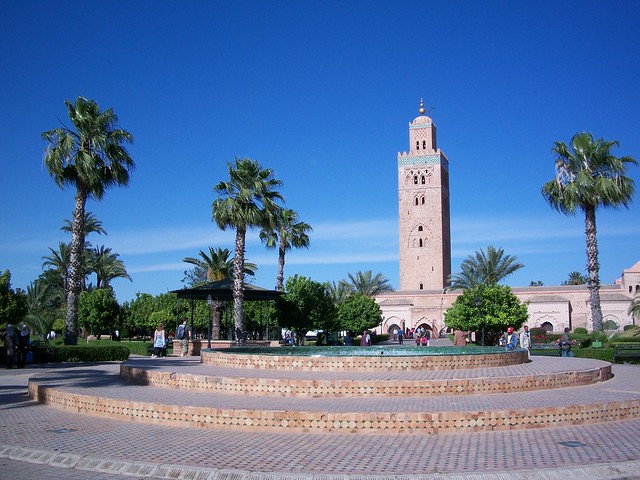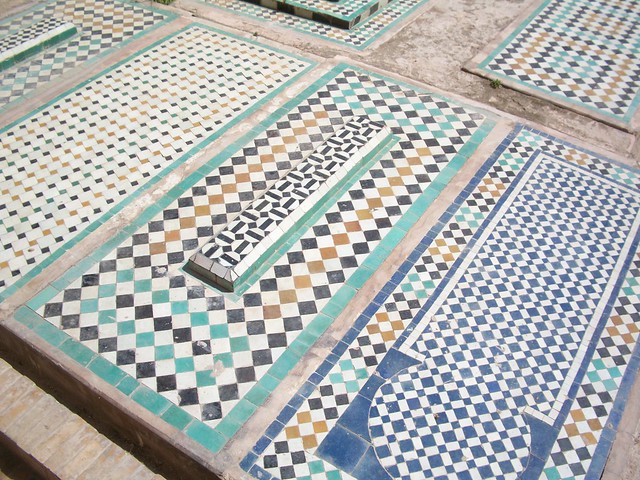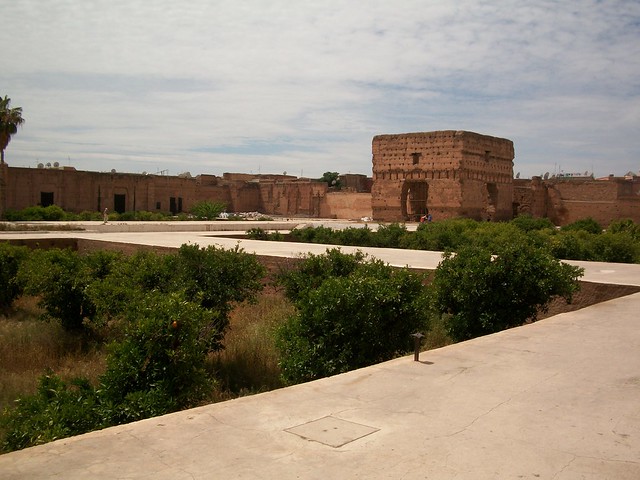
That’s not to say that there aren’t dozens of well-intentioned guide books each describing the rich brilliance of the city, there are. We even had one in our possession and used it in our self guided tour of the city. The problem wasn’t necessarily the lack of things to see and do, it was their quality.
I love history and seek out both sites of historical value, as well as museums that will teach me more about the places I visit. I was excited as I flipped through my guide book on the short flight to Marrakech; there seemed to be dozens of sites that were both unusual as well as historically significant.

Koutoubia
I knew nothing about the Saadian Dynasty or their ornate tombs prior to my visit, and thanks to a poorly interpreted site, I still know almost nothing about them. Apparently, according to Wikipedia and my guide
book, the royal tombs are four-hundred years old and were rediscovered in 1917. I think we paid 10 dirhams to enter the tomb complex, a series of small chambers expertly and ornately decorated. They were fine, I mean they were empty rooms with absolutely no explanation. We weren’t allowed to go in them, so everyone stood at each entrance way looking at what was supposed to be important. We wandered for a few minutes and left.

Saadian Tombs
“No place in Marrakech kindles the imagination quite like the Sultan Ahmed el-Mansour’s 16th century palace.”Sounds pretty nice, right? It sounds like a great place to learn more about Morocco’s past and imagine what the magical city of Marrakech must have been like in its heyday. Yeah, not so much.
Again we paid 10 dirhams each to the dozing docent, entered through a mammoth doorway and found ourselves in the middle of a tremendous courtyard. The palace area was huge, with the red walls crumbling all around. The courtyard was occupied by two, immense pits which at one time were opulent pools. But that was it. There was no one there and nothing to see. We walked around the ruins, wondering what we were seeing. There were stairways leading down to closed off rooms, formally dungeons, and plenty of side chambers that I guess were royal changing rooms. It was almost noon and the intense, Moroccan sun beat down on us, so we walked around for a bit and left.

Badi Palace
I thought about our morning as I devoured the tasty tagine, and realized that I learned more about Morocco from eating lunch than I did looking at the long abandoned ruins. In Marrakech, the real experience isn’t walking through museums or finding once splendorous palaces, it’s enjoying Marrakech as a living city and not as a mammoth museum exhibit.
To truly learn about and enjoy Marrakech, you have to walk through the labyrinthine souks, getting lost but having fun in the process. You have to stop at small food stalls and sample everything from fresh spice cake to steaming hot tagine. You have to add your voice to the cacophony in the Jemma el Fna when, every night, it turns into a massive night market. Once you live the city, it is only then that you really start to appreciate it.
I loved my time in Marrakech and would not hesitate to return. I’m also thankful to the city for teaching me an important travel lesson, that the real travel experiences aren’t found in famous sites or buildings, they’re found with the people who live there.

0 comments:
Post a Comment